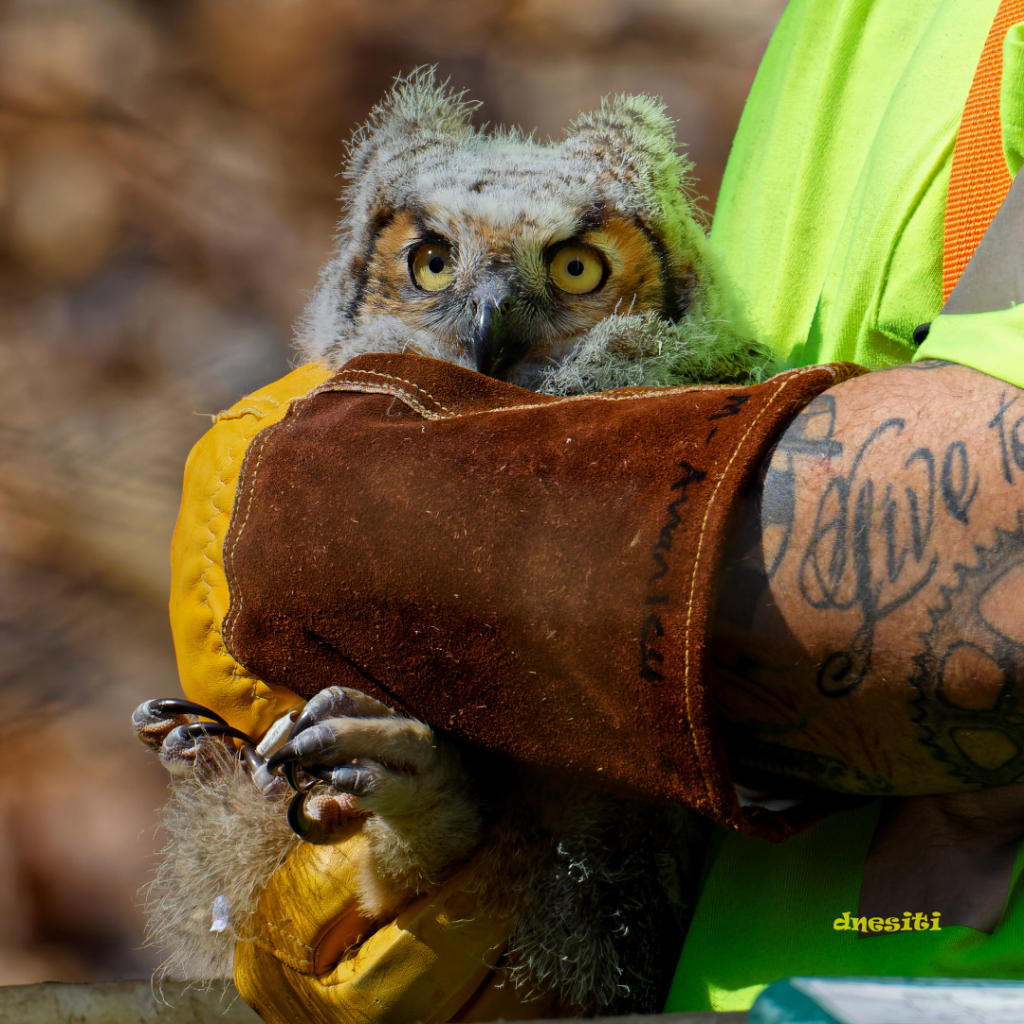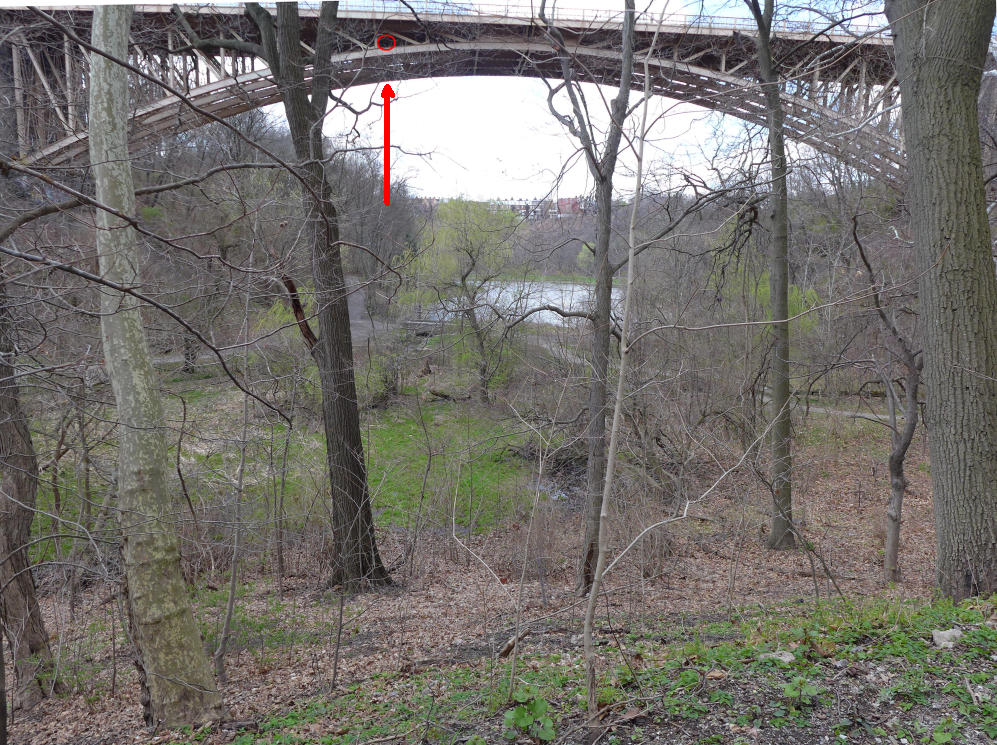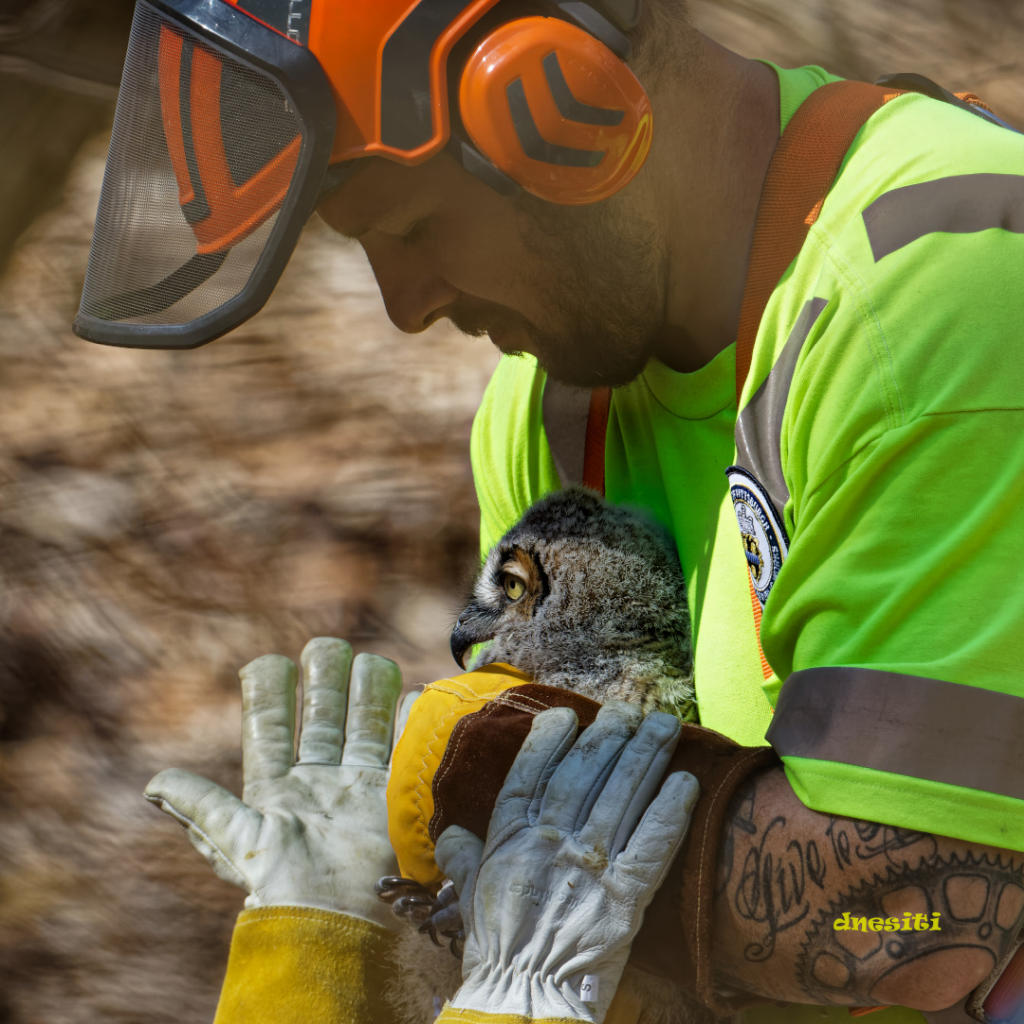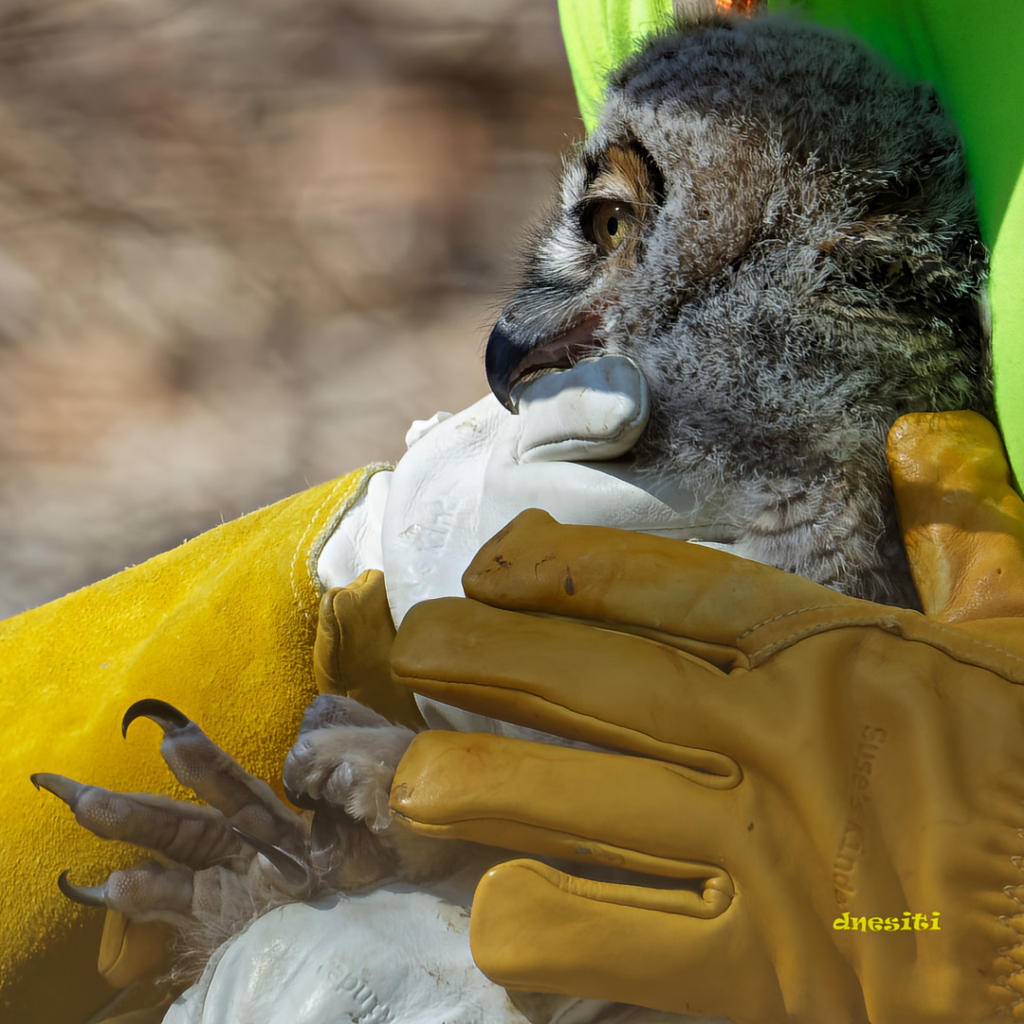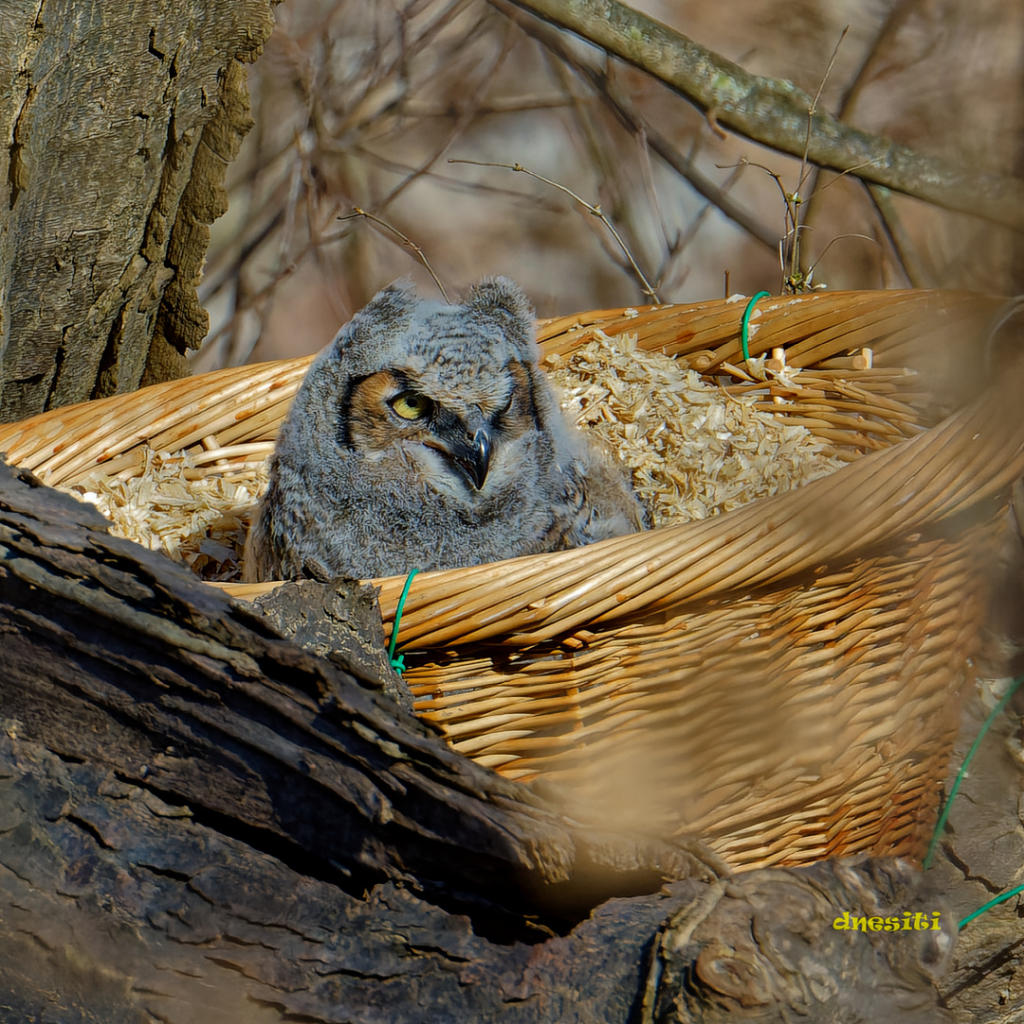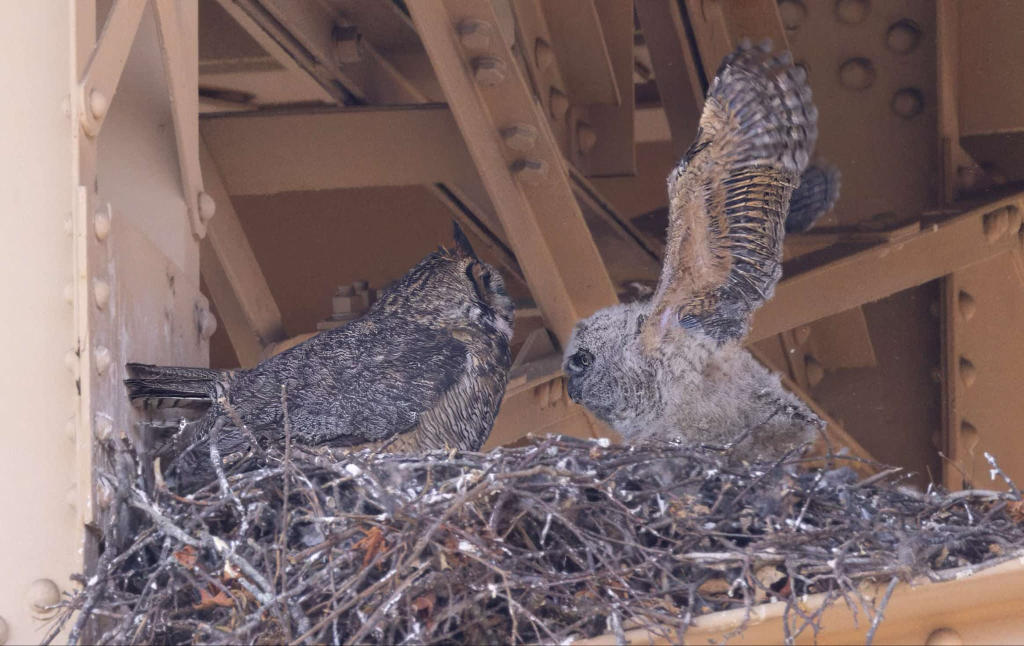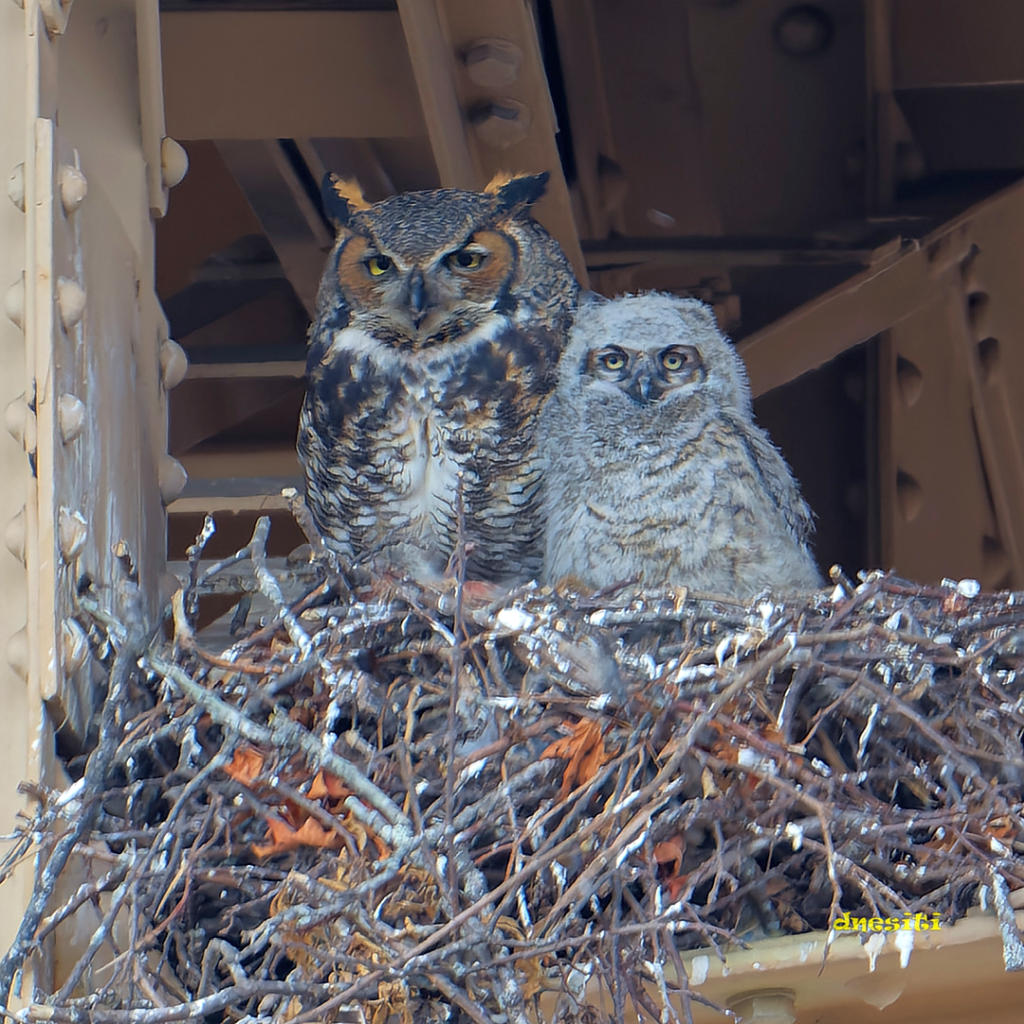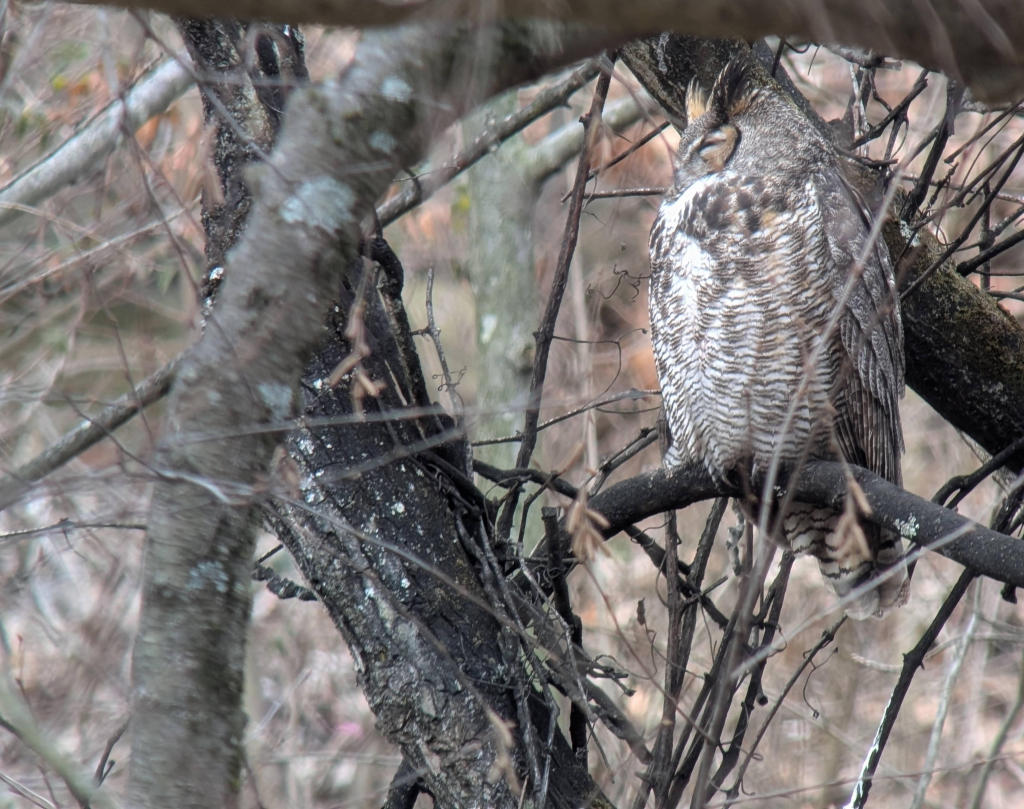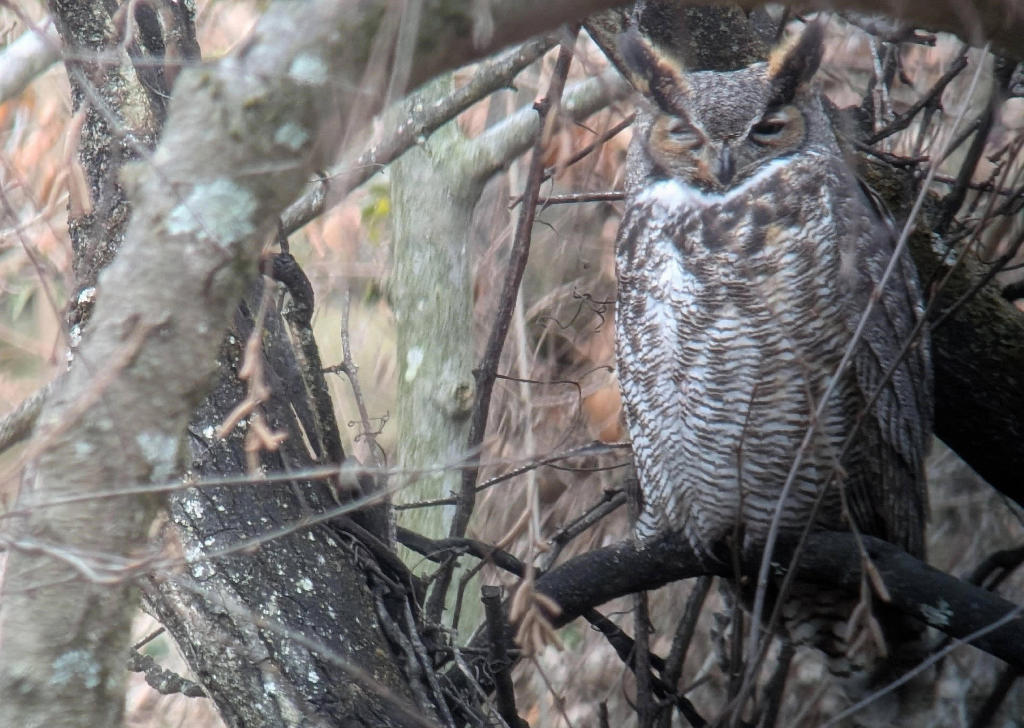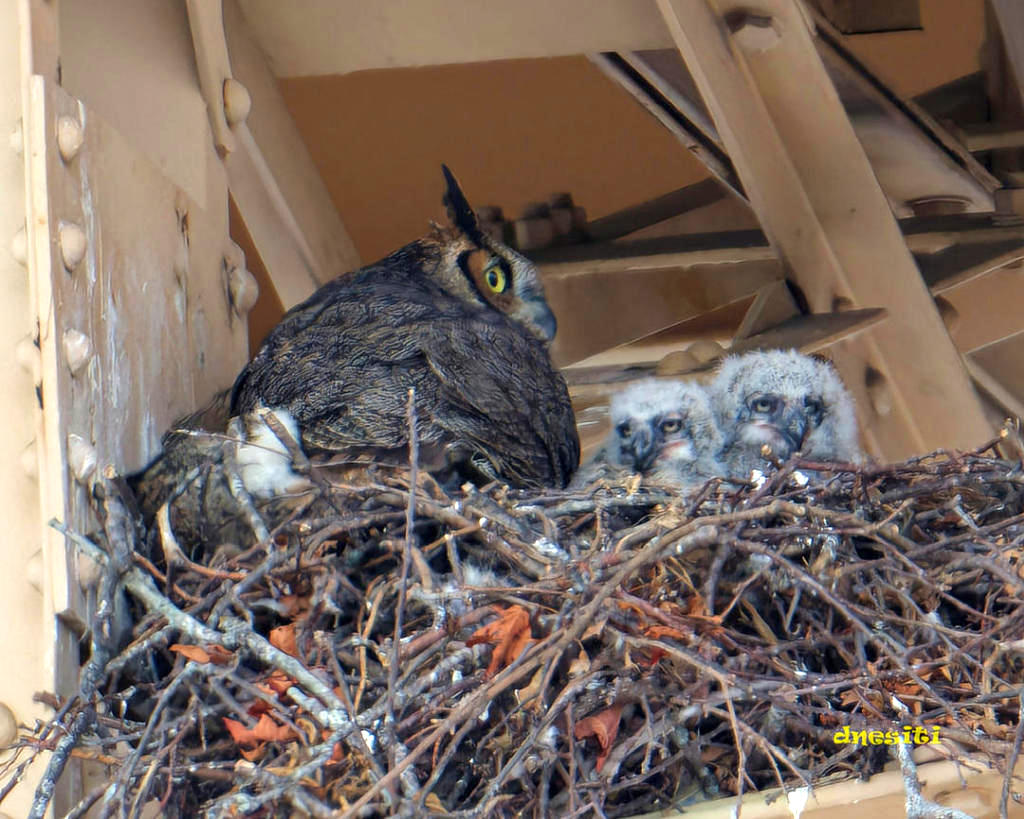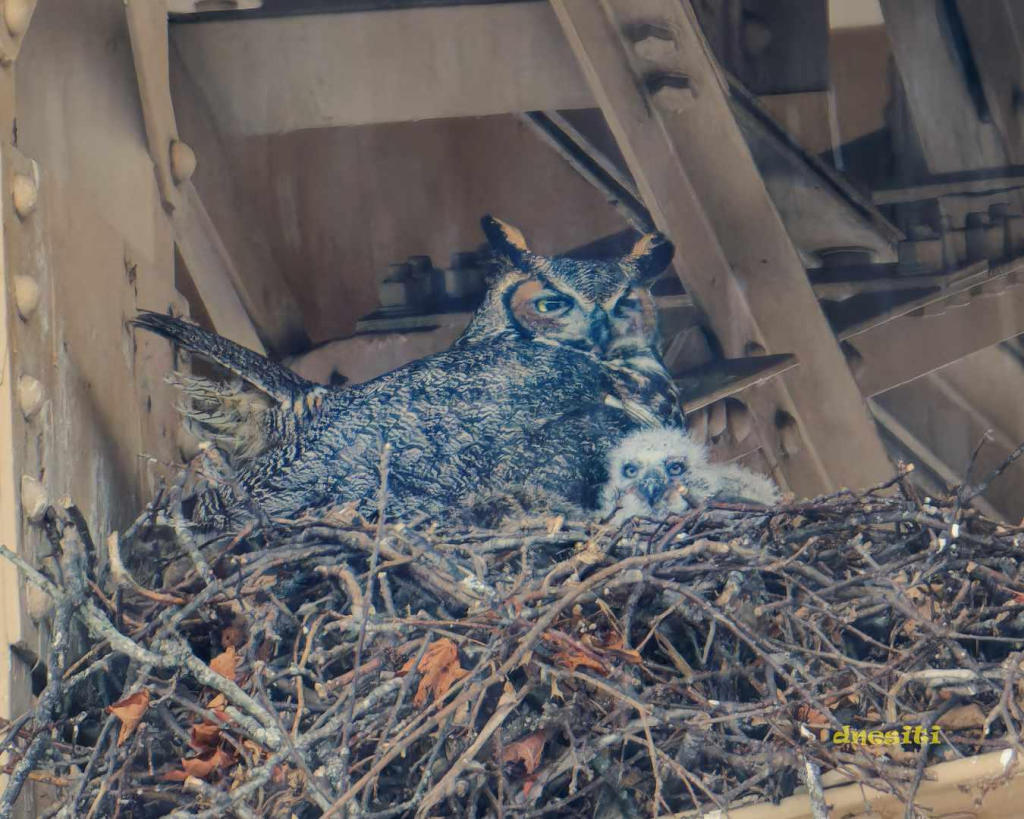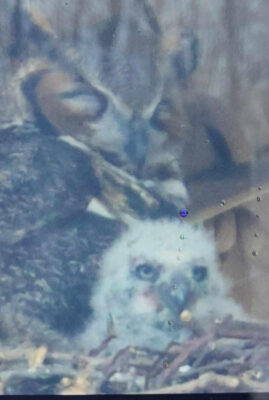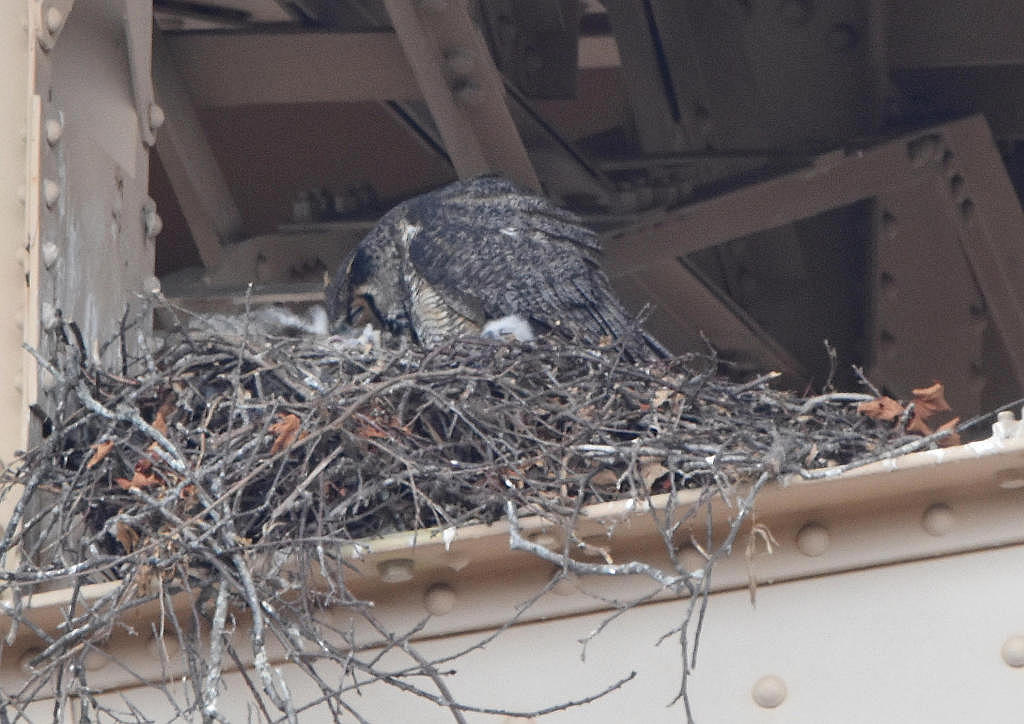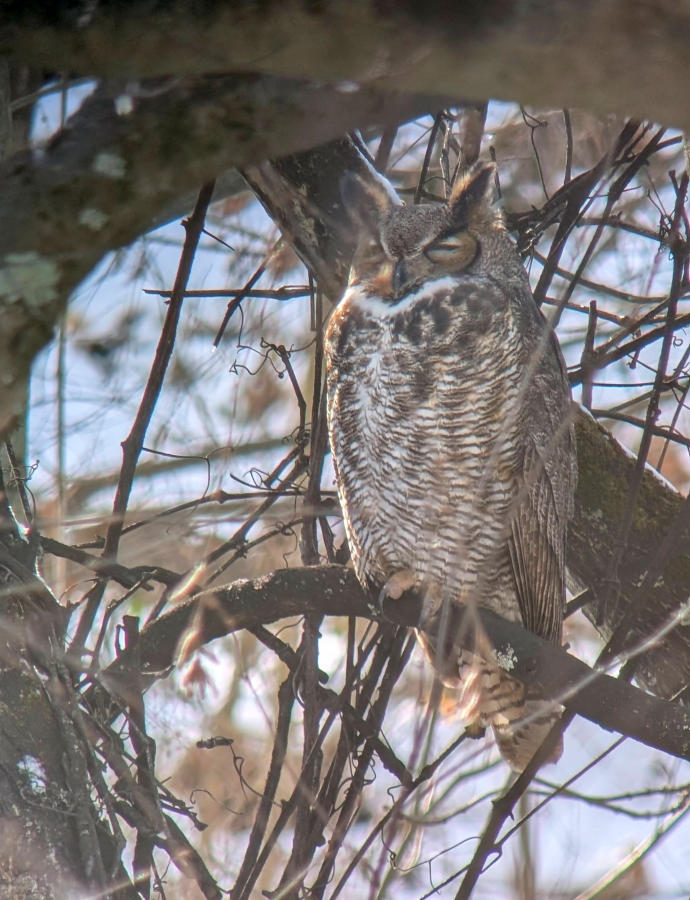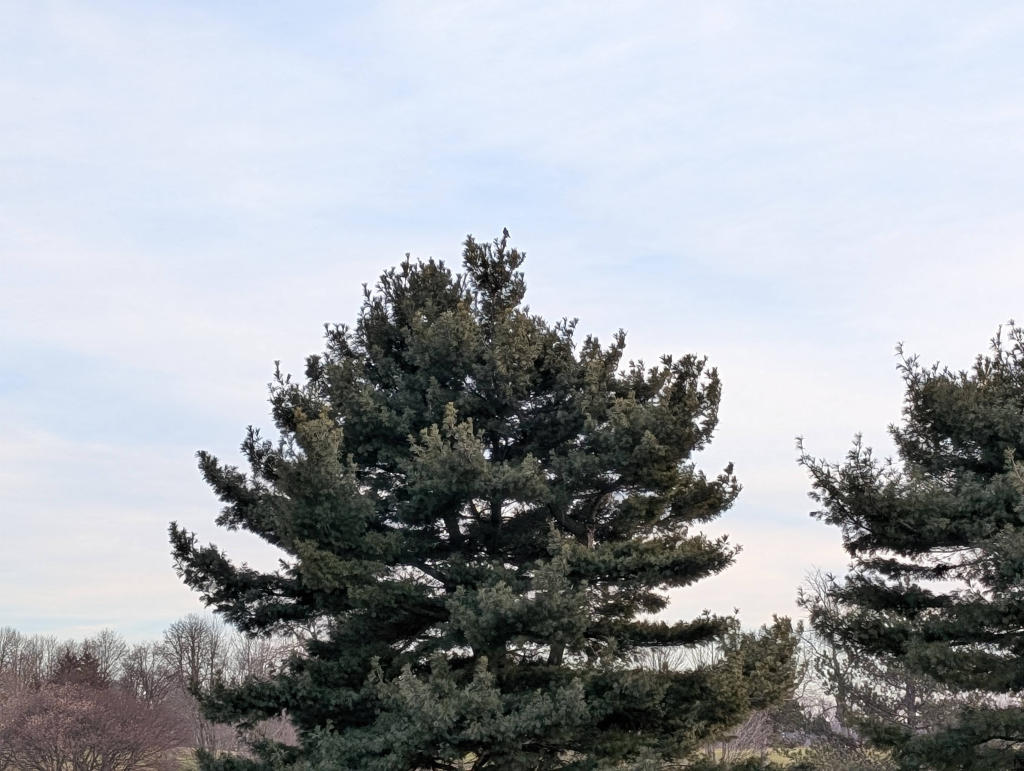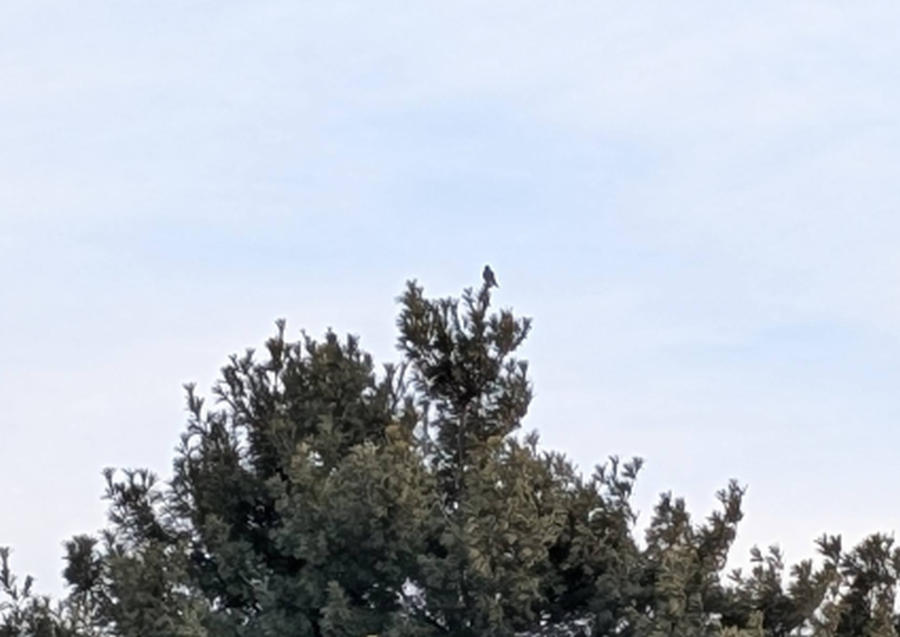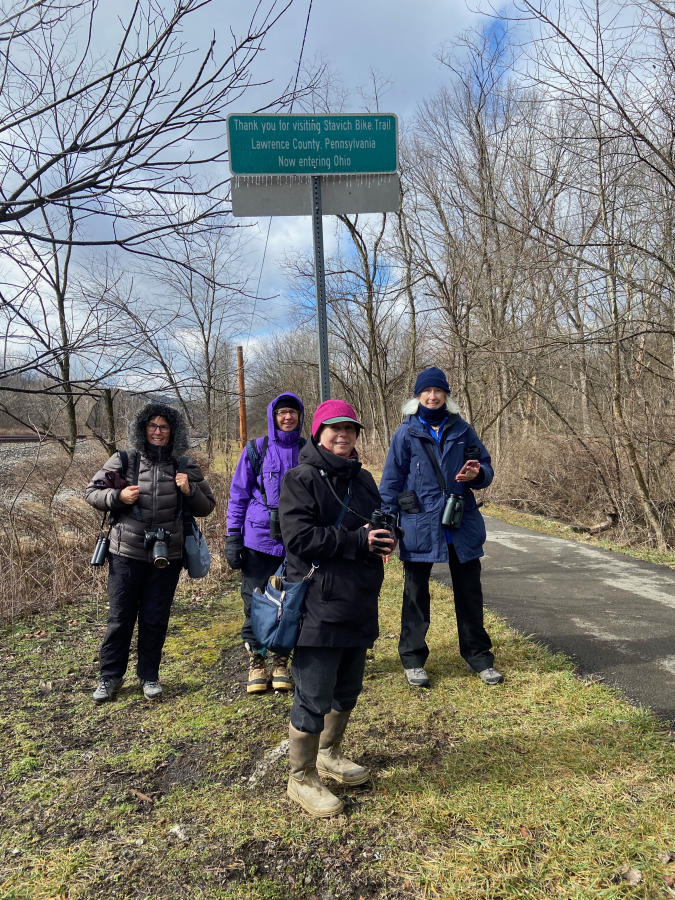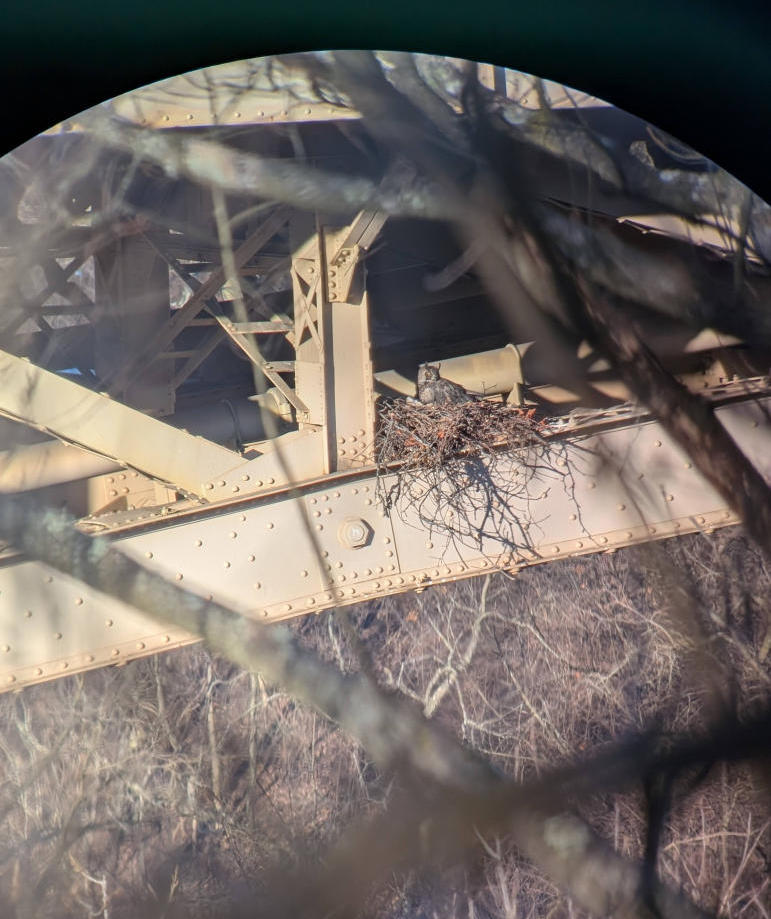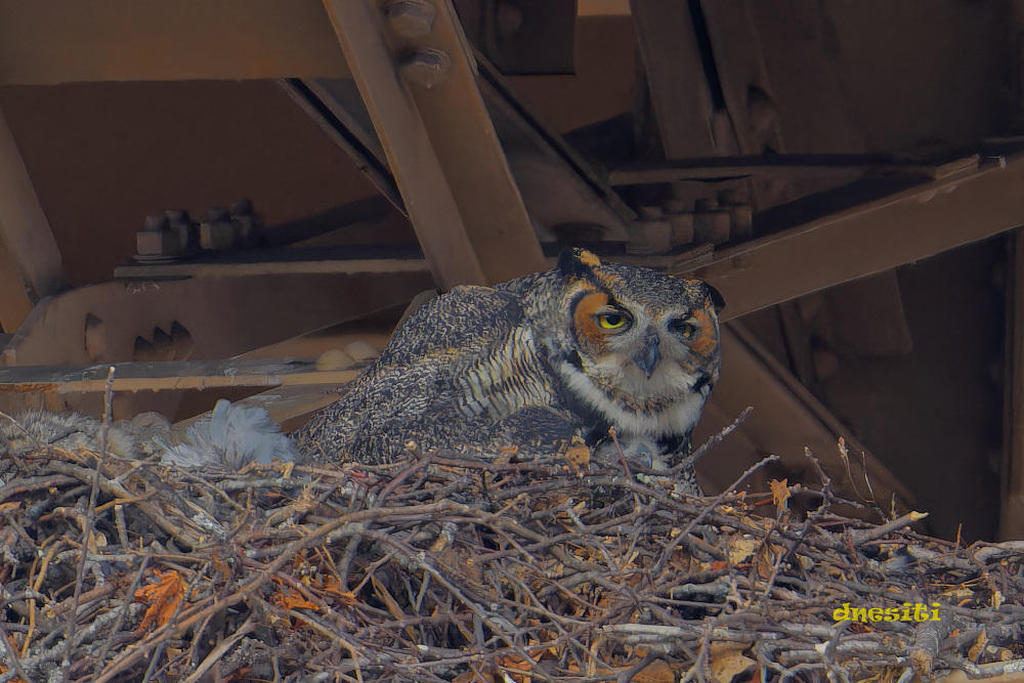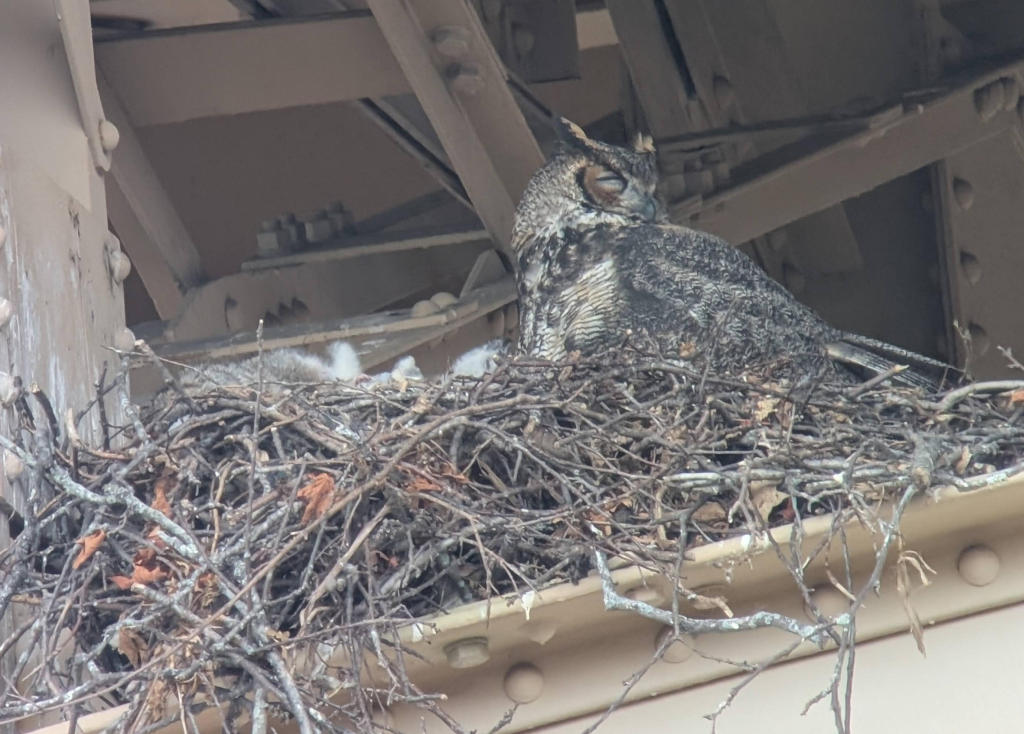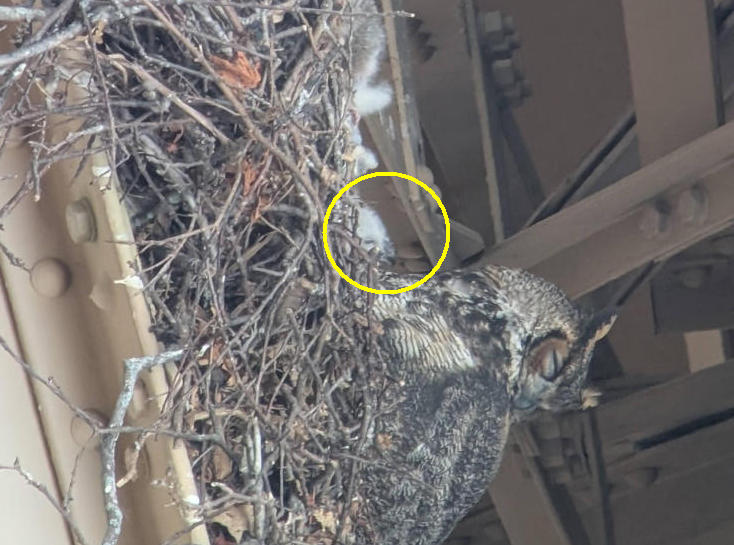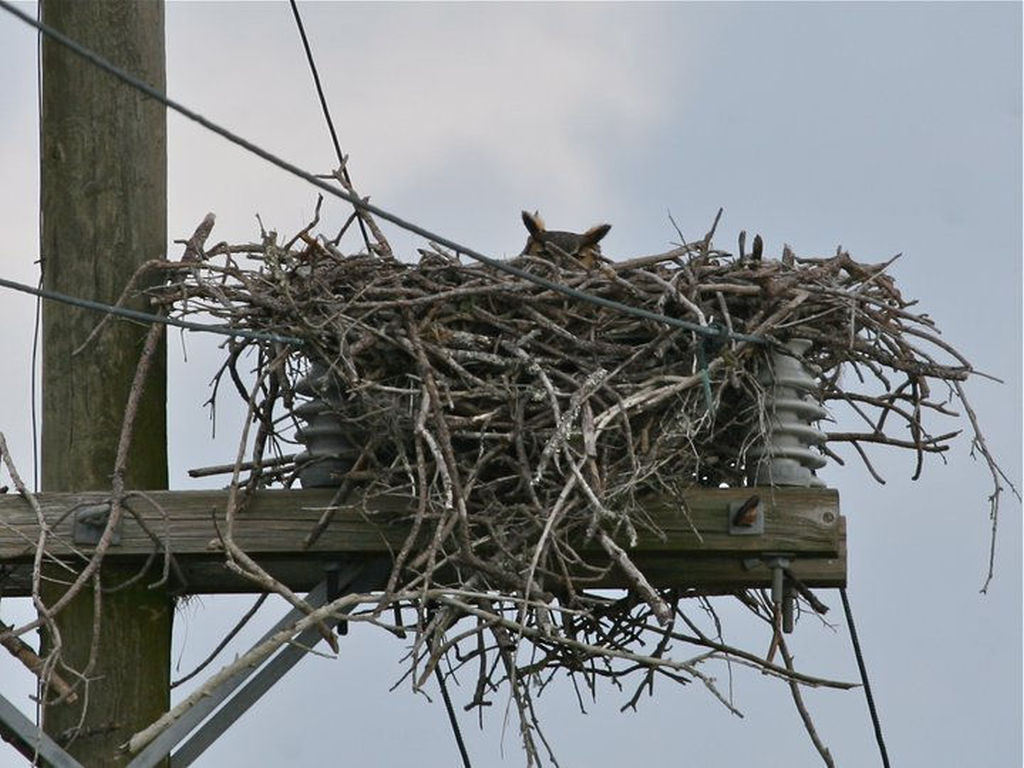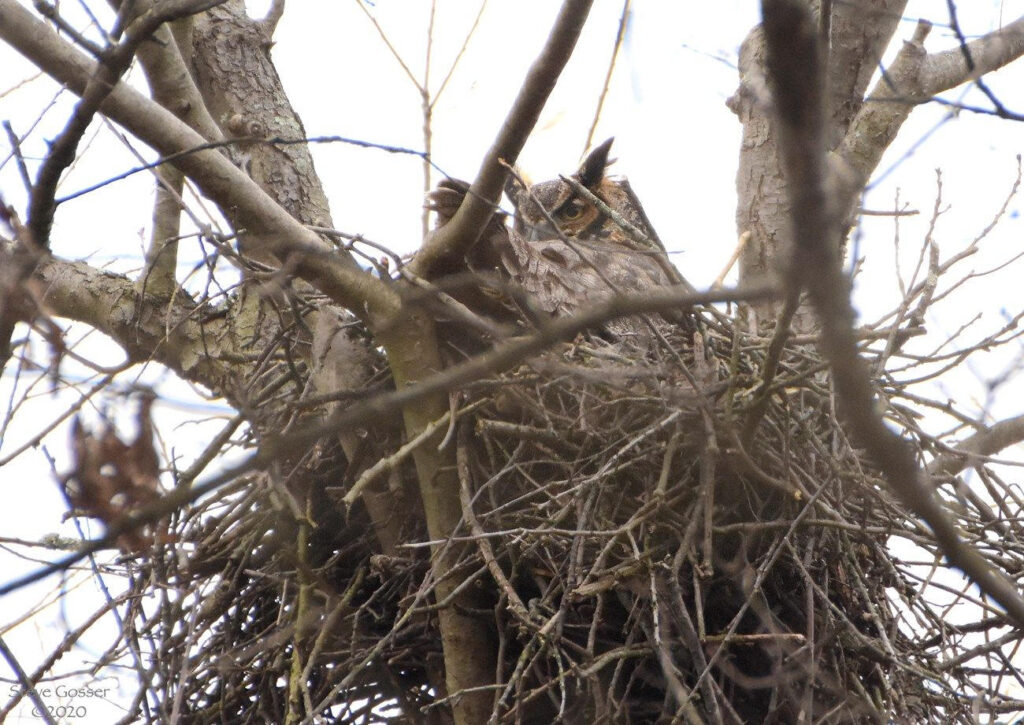
15 March 2025
The great horned owlet that fell from its nest in Schenley Park and was returned on 11 March was relatively easy to find on Wednesday, posed like a statue on a sloping tree branch (below).

The owlet spent Thursday well camouflaged on an inaccessible-to-humans cliff ledge. On Friday she was in a tree, see photograph at top. Juvenile owls use their claws to climb trees. (Note: in case you hear people calling her Muppet, Tamarack gave her that nickname.)
Mercury and Venus
After sunset on 9 March I noticed a bright planet in the west with a divot out of the top of it like a phase of the moon. It was Venus about to set. How did I live this long without knowing that Venus has phases?

When I digiscoped Venus I saw a shadowy planet next to it. Mercury was also about to set, pinkish and to the left of Venus whose brightness plays havoc with my optics.
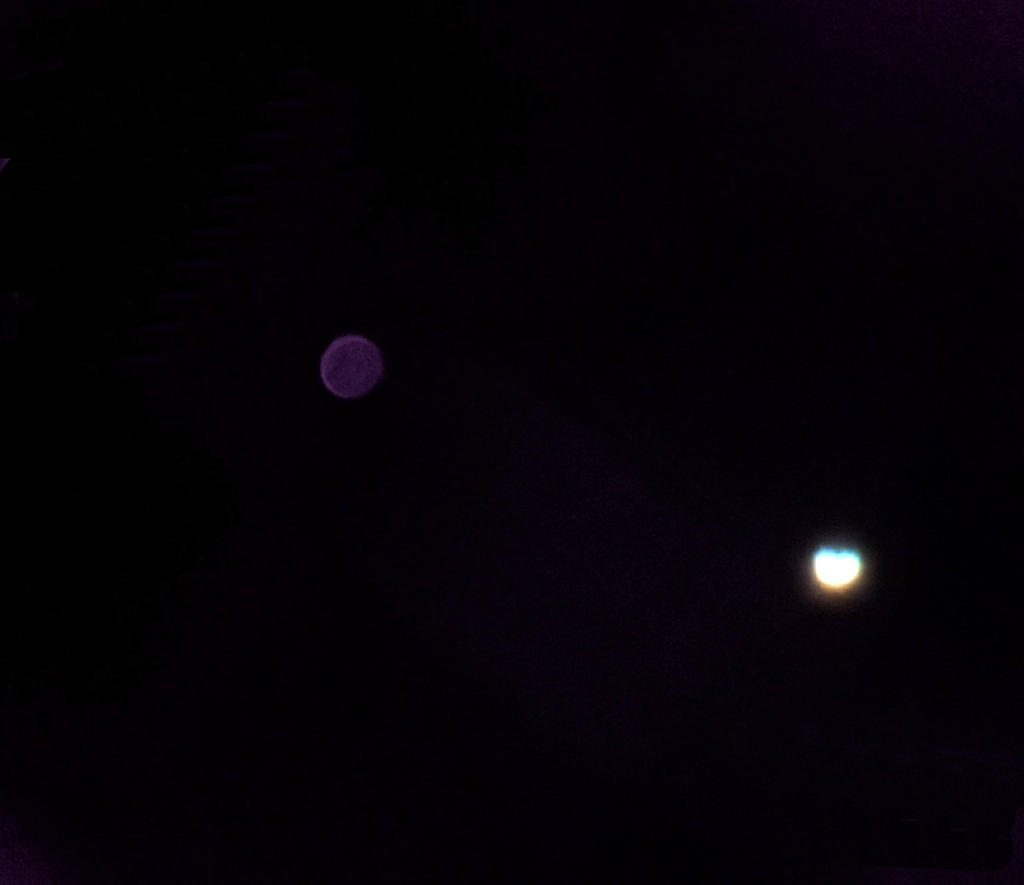
Here’s a view that shows Venus a bit better.
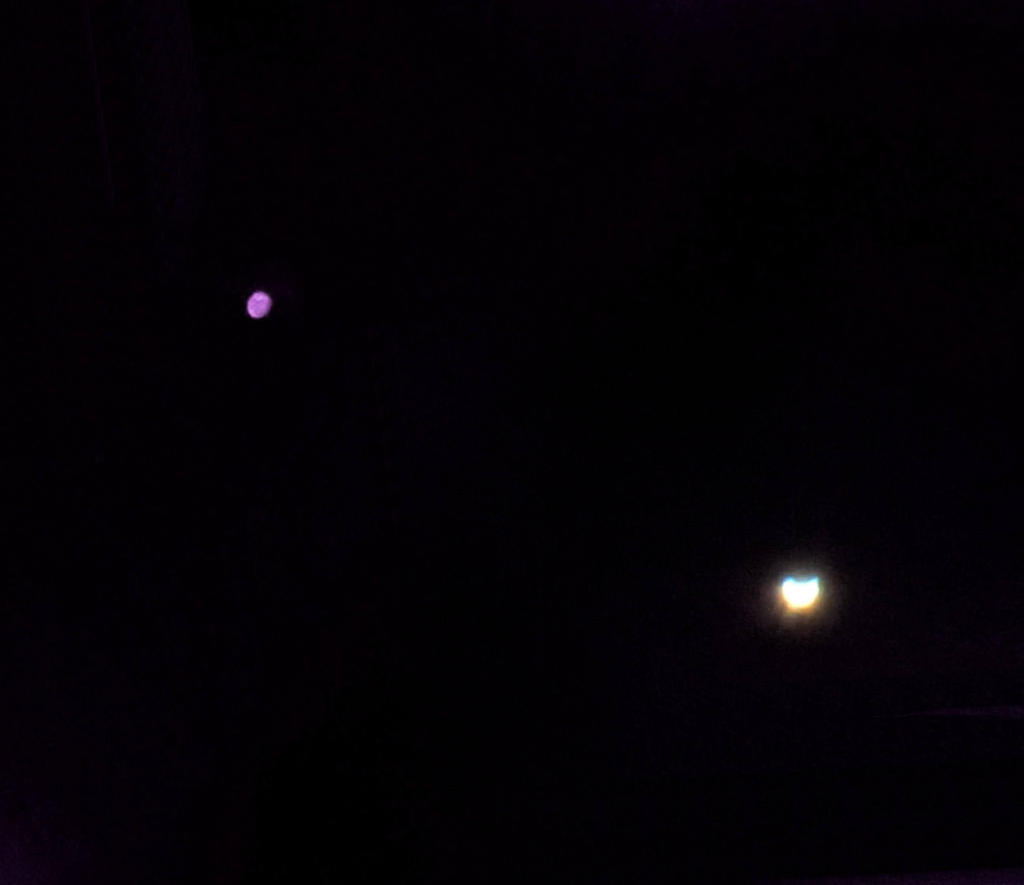
Incipient Spring flowers and leaves
Incipient is a good word to describe spring flower and leaf status this week. As of Thursday 13 March spring was “in an initial stage; beginning to happen or develop.”
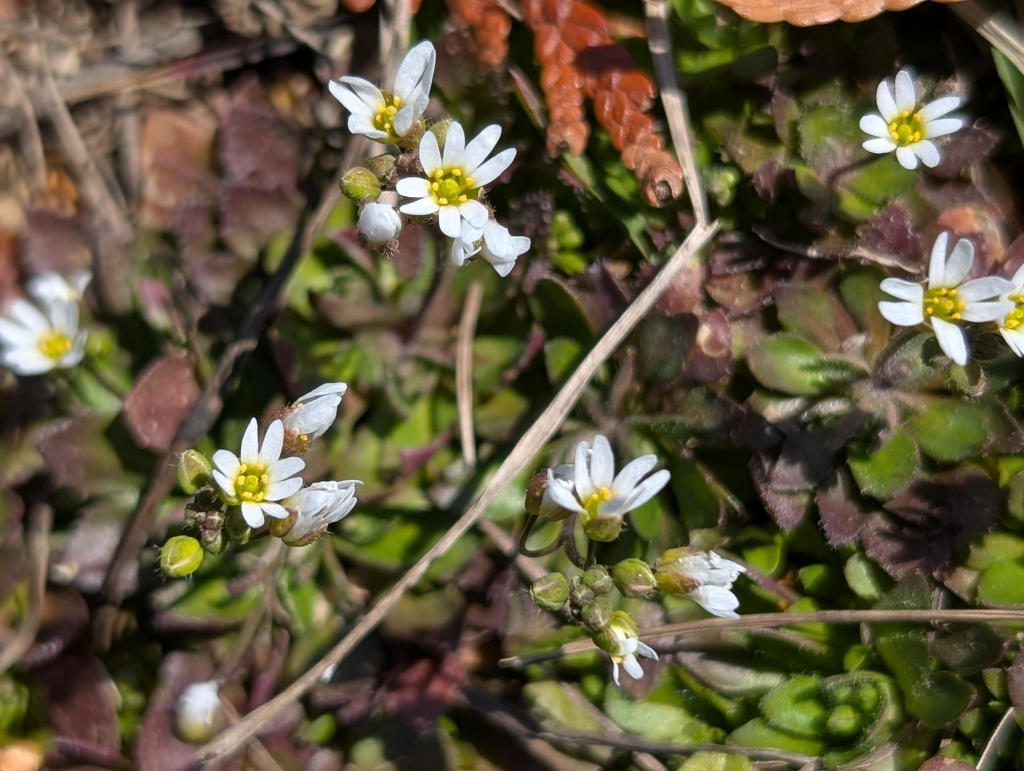
Common whitlowgrass (Draba verna), a member of the cabbage family, blooms very early. It is native to Europe, western Asia and North Africa and is now spread around the world.
Honeysuckle leaves were just beginning to open on Thursday.
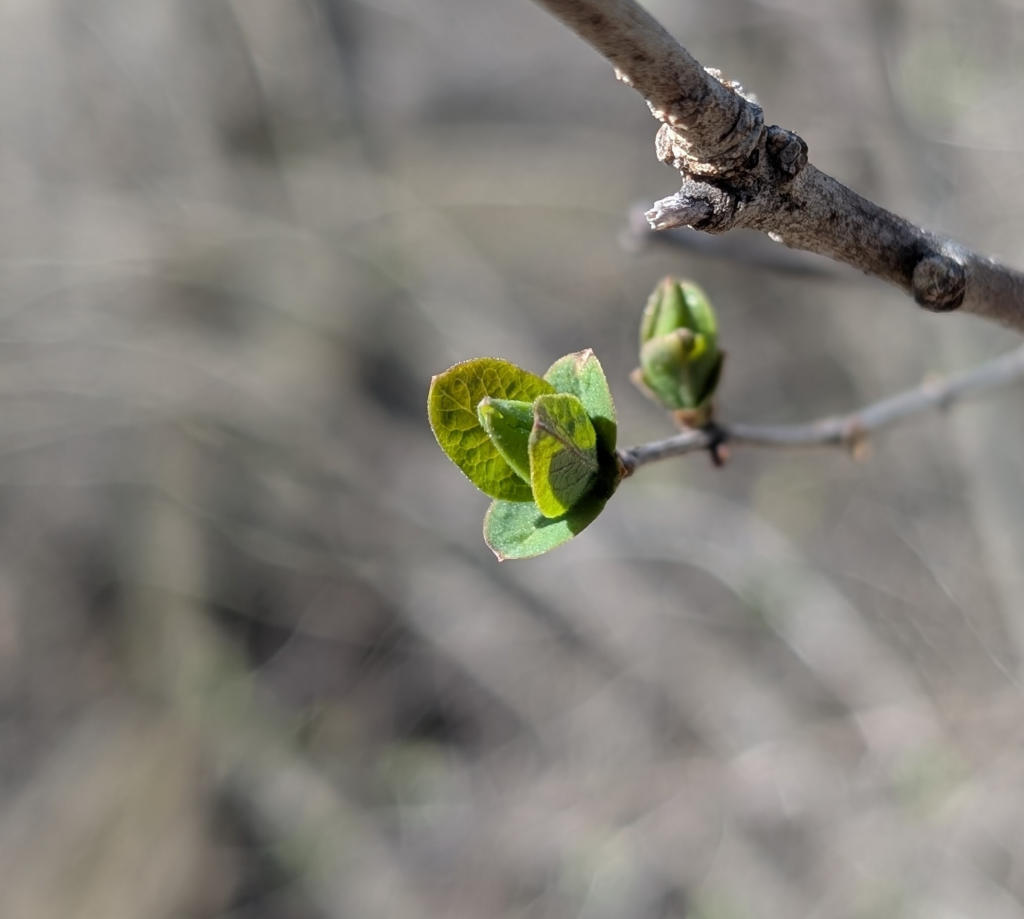
And the Cornelian cherry tree near Panther Hollow Lake had a single tiny flower open in the bud.
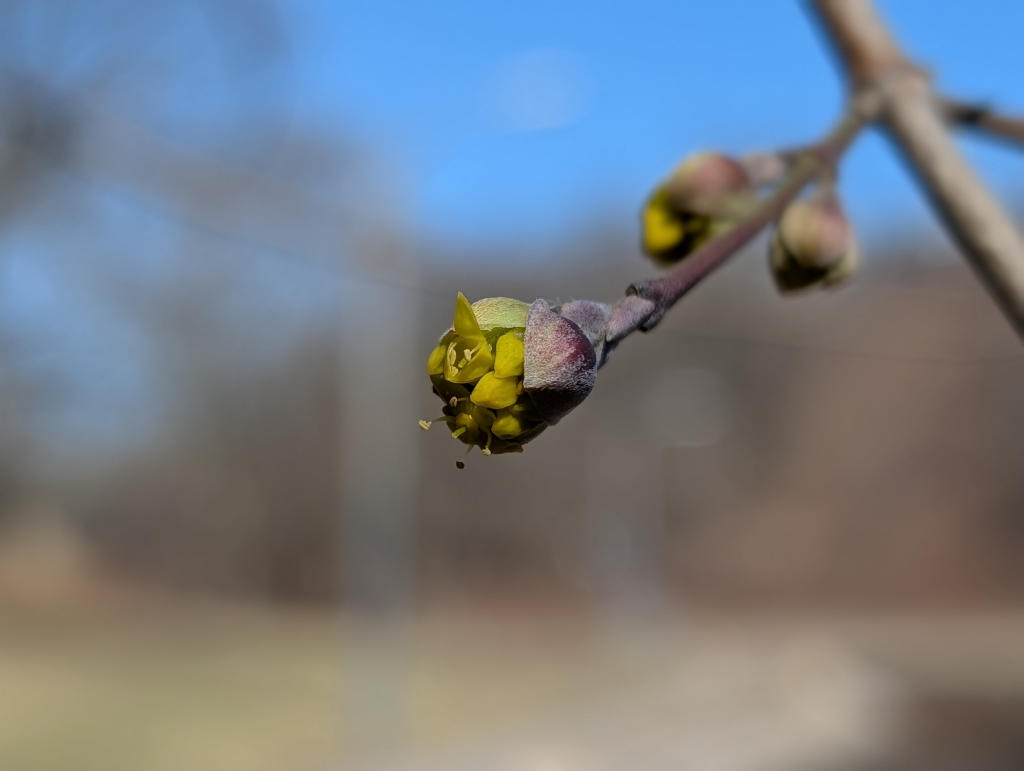
All of these plants are from other continents and they start blooming sooner than our native plants.
After yesterday’s very warm weather everything else will speed up.
